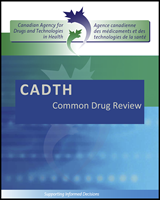Except where otherwise noted, this work is distributed under the terms of a Creative Commons Attribution-NonCommercial-NoDerivatives 4.0 International licence (CC BY-NC-ND), a copy of which is available at http://creativecommons.org/licenses/by-nc-nd/4.0/
NCBI Bookshelf. A service of the National Library of Medicine, National Institutes of Health.
Omalizumab (Xolair): Treatment of Adults and Adolescents (12 Years of Age and above) with Chronic Idiopathic Urticaria [Internet]. Ottawa (ON): Canadian Agency for Drugs and Technologies in Health; 2015 Aug.

Omalizumab (Xolair): Treatment of Adults and Adolescents (12 Years of Age and above) with Chronic Idiopathic Urticaria [Internet].
Show detailsThe results of three double-blind, multi-centre, randomized placebo-controlled trials suggest that 12 weeks of OMA 150 mg or 300 mg administered every four weeks statistically significantly improves UAS7 and its subcomponents (WISS and WNHS) compared with placebo in patients with CIU refractory to H1 antihistamines. However, only OMA 300 mg every four weeks was associated with a statistically and clinically significant improvement in UAS7 of 10 points compared with placebo at 12 weeks, an improvement that was maintained at 24 weeks. Patients who received OMA 300 mg also demonstrated statistically and clinically significant improvements in quality of life measures such as DLQI and CU-Q2oL at 12 and 24 weeks compared with placebo. Upon discontinuation of OMA, treatment response was not sustained over time, such that differences between OMA and placebo were no longer statistically significant at 16 weeks after discontinuation. Due to the chronic nature of the condition, it is likely that many patients with CIU will require long-term therapy with OMA; however there were no data regarding its efficacy upon re-treatment nor was there evidence to inform the optimal interval between courses of treatment. Patients receiving OMA 300 mg appeared more likely to experience adverse effects overall, and headaches in particular, than patients in the PBO groups, but the risks of other harm outcomes did not appear to differ across treatment groups.
- CONCLUSIONS - Omalizumab (Xolair)CONCLUSIONS - Omalizumab (Xolair)
- Clinical Review Report - Edoxaban (Lixiana)Clinical Review Report - Edoxaban (Lixiana)
Your browsing activity is empty.
Activity recording is turned off.
See more...